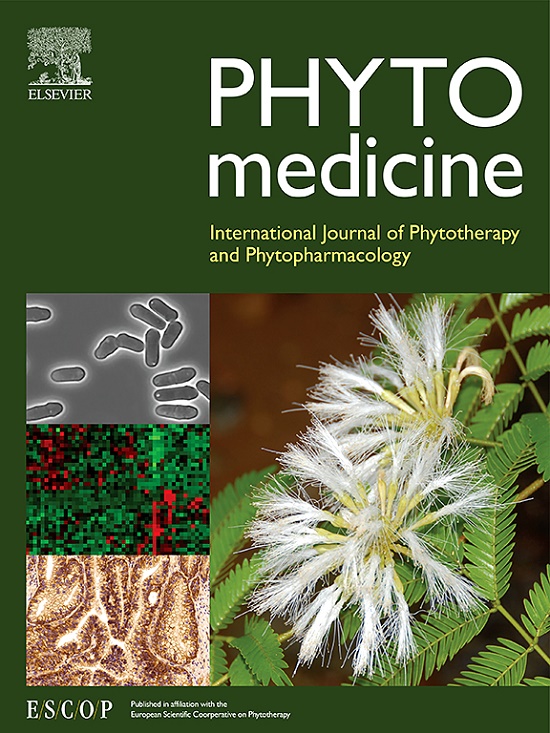Tianma Gouteng Decoction improve neuronal synaptic plasticity and oligodendrocyte apoptosis in Parkinson's disease mice
IF 6.7
1区 医学
Q1 CHEMISTRY, MEDICINAL
引用次数: 0
Abstract
Background
Parkinson's disease (PD) is a complex and multifactorial disorder of the nervous system. Tianma Gouteng Decoction (TGD) is a clinical prescription of traditional Chinese medicine for PD, but its neuroprotective effects and mechanisms for PD are poorly understood.
Purpose
The aim of this study was to explore the mechanism of TGD in the treatment of PD.
Study design
Serum pharmacochemistry, single cell sequencing, network pharmacology, and validation experiment were combined to study the effect of TGD in PD model.
Methods
TGD water extract and its distribution in serum of PD mice were analyzed by secondary metabolomics. The crossing blood-brain barrier components and targets were preliminarily identified. Target cells and pathways of TGD were analyzed by network pharmacology and single cell sequencing.
Results
TGD treatment improved the movement disorders in MPTP-induced PD mice, restoring dopaminergic neurons in the substantia nigra region and suppressing the expression of α-synuclein. We identified 1272 components in TGD, among which 73 were distributed in the serum of PD mice after oral administration. Network pharmacological analysis demonstrated that these components were involved in the regulation of apoptosis, and 15 of them could across the blood-brain barrier and bind to PD pathological proteins. Single nucleus RNA sequencing analysis identified 18 cell subpopulations, and TGD treatment restored the neuron-oligodendrocyte crosstalk. Neurons were identified as the most widely responding target cells, while oligodendrocytes were the core response target cells to TGD therapy. After treatment, the apoptosis of oligodendrocytes was inhibited, and the secretion of trophic factor was enhanced, facilitating the improvement of neuronal synaptic plasticity and neuroinflammation.
Conclusion
This study systematically elucidates the molecular mechanism of TGD improving movement disorders, which is helpful to provide new ideas for drug development of PD.

求助全文
约1分钟内获得全文
求助全文
来源期刊

Phytomedicine
医学-药学
CiteScore
10.30
自引率
5.10%
发文量
670
审稿时长
91 days
期刊介绍:
Phytomedicine is a therapy-oriented journal that publishes innovative studies on the efficacy, safety, quality, and mechanisms of action of specified plant extracts, phytopharmaceuticals, and their isolated constituents. This includes clinical, pharmacological, pharmacokinetic, and toxicological studies of herbal medicinal products, preparations, and purified compounds with defined and consistent quality, ensuring reproducible pharmacological activity. Founded in 1994, Phytomedicine aims to focus and stimulate research in this field and establish internationally accepted scientific standards for pharmacological studies, proof of clinical efficacy, and safety of phytomedicines.
 求助内容:
求助内容: 应助结果提醒方式:
应助结果提醒方式:


